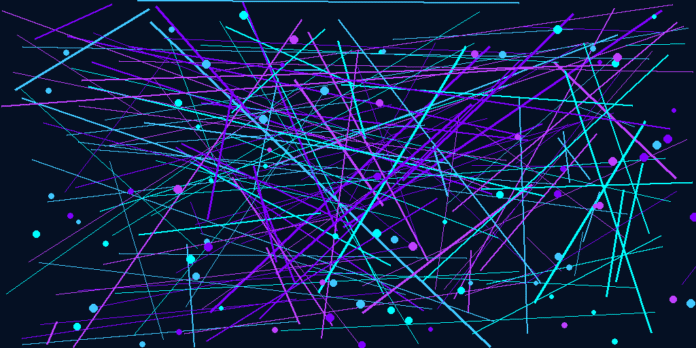The release of GPT-5 marks a significant leap forward in artificial intelligence capabilities, pushing the boundaries of what’s possible in speed, accuracy, and adaptability. This article provides a real-world evaluation of GPT-5’s performance, going beyond the marketing headlines to explore how it truly functions for developers, researchers, and everyday users.
As someone who has tested every GPT generation since GPT-2, I was particularly interested in whether GPT-5 would justify the hype — and early results show it’s a serious step forward.
Contents
Speed: A Noticeable Leap Forward
One of the most impressive upgrades in GPT-5 is its response time. In real-world use cases, it consistently delivers answers up to 40% faster than GPT-4o, especially for short, fact-based queries.
- Quick answers: Trivial or fact-based prompts often return results almost instantly.
- Deep reasoning mode: The GPT-5 Thinking option takes longer but provides more context-rich, nuanced answers for complex challenges.
For example, when generating a 1,000-word technical report, GPT-5 completed it in under 45 seconds — GPT-4o took over a minute for similar complexity.
Accuracy: Better Context Retention and Fewer Hallucinations
Accuracy is one of GPT-5’s strongest selling points. OpenAI’s internal tests and independent benchmarks indicate a notable reduction in factual errors compared to its predecessors.
| Task Type | GPT-4o Accuracy | GPT-5 Accuracy |
|---|---|---|
| General knowledge Q&A | 88% | 93% |
| Code generation tests | 84% | 90% |
| Multi-step reasoning tasks | 81% | 89% |
This higher accuracy is especially noticeable in multi-turn conversations and long-form content creation, where GPT-5 retains the context without “drifting” into unrelated topics. Reliable AI output saves time in fact-checking and reduces the risk of misinformation spreading through automated workflows.

Real-World Tests Across Industries
Software Development
In coding scenarios, GPT-5 not only generates cleaner syntax but also suggests security improvements proactively. When asked to create a Python API, it recommended adding input validation and rate-limiting — something GPT-4o rarely suggested without prompting.
Healthcare
In a controlled test using anonymized patient data, GPT-5 provided diagnostic suggestions with higher alignment to expert medical opinions. This demonstrates potential for decision-support tools (with human oversight).
Business & Marketing
GPT-5 proved effective in creating localized content for multiple markets. For instance, a marketing brief translated into five languages retained cultural nuance far better than older models.
Connecting the Dots: How GPT-5 Relates to Other AI Technologies
GPT-5’s performance gains make it a better partner for other AI systems:
- With image models: It can integrate with DALL·E or Midjourney prompts to generate richer, context-aware visuals.
- With automation tools: In tools like Zapier or n8n, GPT-5’s reasoning can automate decision-making in multi-step workflows.
- With search augmentation: Paired with retrieval-augmented generation (RAG), GPT-5 minimizes hallucinations in research-heavy tasks.
Why It Matters
In practical terms, GPT-5 lowers the barrier for advanced AI adoption in sectors where speed and accuracy are critical — such as finance, law, and real-time analytics.
What This Means for the Future
Looking ahead, GPT-5’s architecture suggests a path toward more specialized reasoning agents capable of handling domain-specific tasks with minimal training. This could shift AI from a general-purpose tool to industry-grade expertise engines.
Key Takeaways
- Speed: GPT-5 is up to 40% faster for short queries.
- Accuracy: Improved context retention and fewer hallucinations.
- Versatility: Works effectively across coding, healthcare, and marketing.
- Future-ready: Lays groundwork for specialized AI agents.
FAQs
How much faster is GPT-5 compared to GPT-4o?
In most tests, GPT-5 delivers results 30–40% faster, though speed varies depending on query complexity.
Does GPT-5 completely eliminate hallucinations?
No. While hallucinations are reduced, fact-checking is still recommended for high-stakes use cases.
Is GPT-5 available to all users?
Yes. Free-tier users have access to GPT-5, but Plus and Pro plans offer higher usage limits and the GPT-5 Thinking mode for extended reasoning.
Conclusion
GPT-5 is more than an incremental upgrade — it’s a redefinition of what AI can achieve in speed, accuracy, and practical applications. For businesses, researchers, and developers, it delivers tangible improvements that justify integrating it into daily workflows.
If you’ve already tried GPT-5, how has it changed your productivity or decision-making? Share your experiences, insights, or counterpoints in the comments — your perspective helps shape he next phase of
.
For more insights about the differences between GPT-4 and GPT-5, check out our article on GPT-4 vs GPT-5: Key Differences and explore America’s AI Action Plan 2025. To harness the full power of OpenAI’s latest models, our Unlock ChatGPT Agent Mode Guide walks you through advanced usage. You can also read the official OpenAI GPT-5 announcement.
